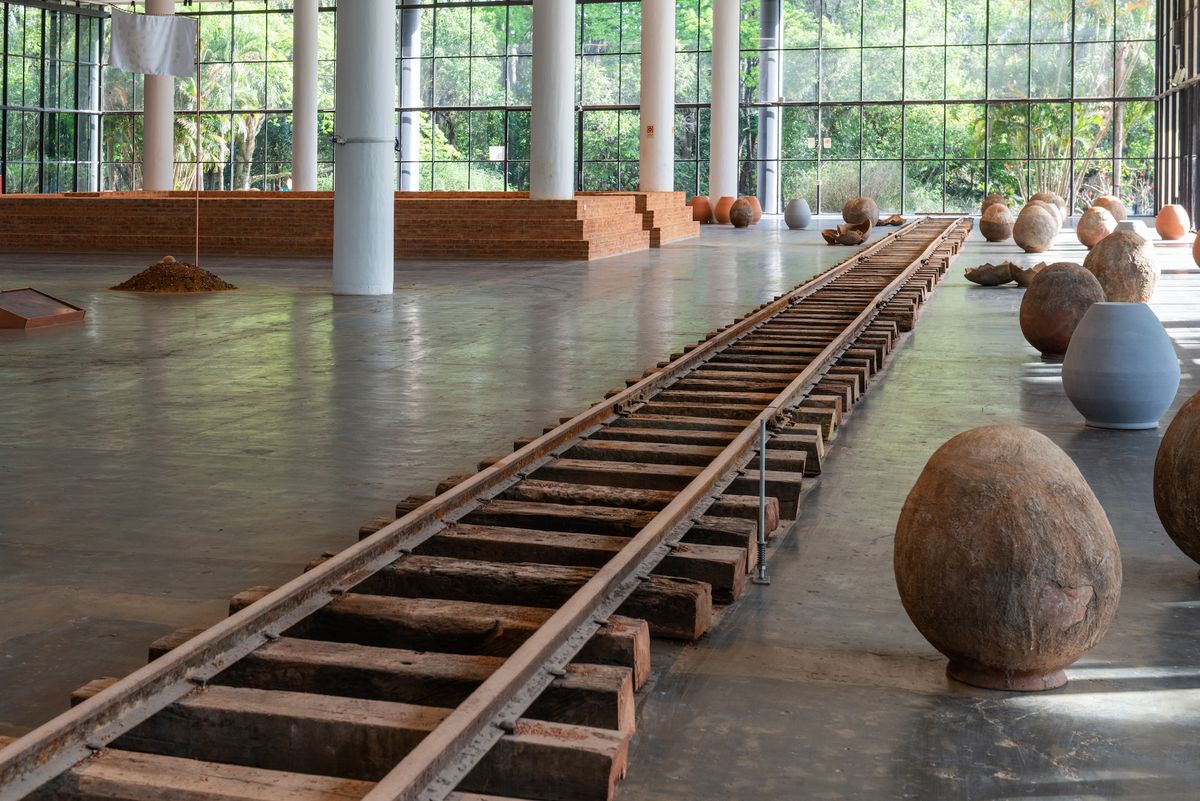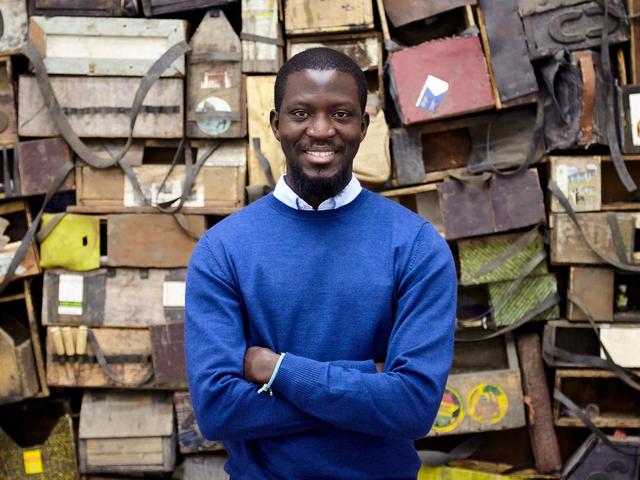As the 35th edition of the Bienal de São Paulo opened to the public last week, organisers were forced to block public access to part of the artist Ibrahim Mahama’s Parliament of Ghosts (2023) after an unsupervised child tripped over part of the installation and broke his arm.
A centrepiece of this edition of the biennial, the sprawling installation is an iteration of a work that was first unveiled at the Whitworth Gallery in Manchester as part of the Manchester International Festival in 2019, where it was met with critical praise. The Ghanaian artist explains that the piece combines sculpture with elements of abandoned infrastructure in Ghana to consider the enduring influences of colonialism in the country.
The accident happened last Friday (8 September) when the child was walking on a railroad track that is one of the main components of the conceptual work. The track was recovered from the Ghana Railway Company that was constructed in the 1950s as engineers—primarily from the Eastern Bloc—worked to expand the Soviet Union’s influence in West Africa. Mahama obtained this particular piece of the installation after years of concerted efforts and negotiations with Ghanian officials.
Ibrahim Mahama's ghosts of Ghana. Plus, China's epic Picasso show
The installation is the first work that visitors encounter when entering the Ciccillo Matarazzo Pavilion at Ibirapuera Park, where the biennial has been held since 1954. Visitors were previously allowed to touch and interact with the work.
The decision to restrict access to the railroad track was made as a precautionary measure, according to a statement from organisers of the exhibition. “Unfortunately, there was an incident despite the work being supervised by a public advisor and a large audience in that space,” organisers said.
The child’s mother, Ana Maria Fiorini, a São Paulo-based book editor who has worked on several texts dealing with art and social justice, told the Folha de São Paulo that the biennial staff should have been more closely monitoring the work, but did not see the accident happen. “He was lucky he didn’t hit his head on the track,” she said. “One blow could even be fatal.”
Her son, who broke two bones in his arm, and a friend were walking on the railroad track while waiting for a lecture by the Portuguese artist and writer Grada Kilomba, who co-curated the biennial with the Brazilian curator Diane Lima, the Brazilian curator and anthropologist Hélio Menezes and the Spanish artist and curator Manuel Borja-Villel.



